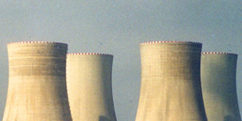
Courtesy of IAEA.org
For the second year in a row, ten new nuclear reactors started to generate electricity in 2016, the highest number since the 1980s, according to the 2017 edition of the IAEA’s Nuclear Power Reactors in the World.
As of 31 December 2016, 448 reactors were in operation worldwide, with a net capacity of 391GW of electricity, the highest in history. Within the same period, three reactors were permanently shut down and 61 nuclear reactors were under construction. Two reactors remain in long-term shut down.
“In the past two years 20 new nuclear power reactors were connected to the grid and started producing electricity. This demonstrates the important role that nuclear power continues to play in meeting growing energy demand throughout the world,” said Mikhail Chudakov, IAEA Deputy Director General and Head of the Department of Nuclear Energy.
This reference guide provides global data on new nuclear power plants as well as details on the various types of reactors in operation, Chudakov highlighted.
This is the 37th edition of Reference Data Series No.2, which summarizes information on power reactors in operation, under construction and shut down as well as performance data of operational reactors in IAEA Member States. It also includes data on the types of reactors, nuclear electricity production, the categories of new reactors connected to the grid, technical terms used during the decommissioning process of reactors, and the specification and performance history data of operating reactors.
The information is collected through designated national counterparts in Member States who feed to the IAEA’s Power Reactor Information System (PRIS). PRIS is home to the most current and frequently updated figures on nuclear reactors in the world, also with details on country levels.
Nuclear power can deliver a steady baseload supply of electricity needed to power a modern economy. It is generally competitive, offers a low cost, reliable long term source of electricity, and has a good operational record. NPPs produce virtually no greenhouse gas emissions or air pollutants during their operation and have only very low emissions over their entire life cycle.
The IAEA provides assistance and information to countries that are considering introduction of nuclear power. It helps interested Member States to develop their energy planning capabilities and establish the necessary infrastructure for a safe, secure and sustainable nuclear power programme.








